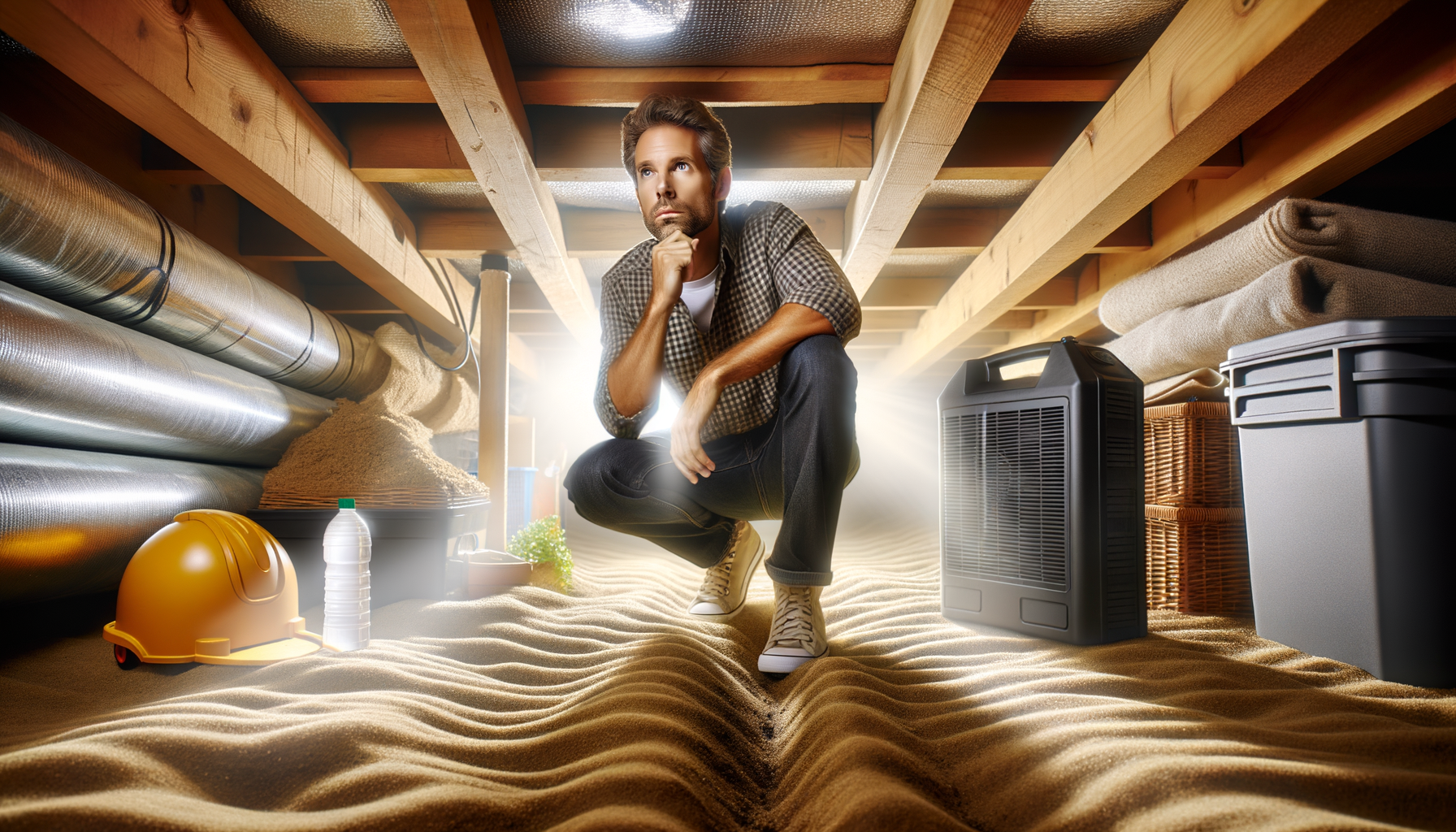Why You Should Take Care of Your Crawlspace
Why a Clean Crawlspace is Important
Having a clean crawlspace is very important for your home. This part of your house helps keep it dry, keeps the air clean, and supports your home’s structure. Taking care of your crawlspace in Canada and everywhere else can help your home last longer and stay comfy.
What Happens if You Don’t Fix Crawlspace Problems
If you ignore problems in your crawlspace, it can cause big issues like breaking parts of your home, mold, and pests. These problems can make your house unsafe and cost a lot of money to fix. Taking care of your crawlspace regularly can stop these problems and keep your home safe.
Common Crawlspace Issues
Too Much Moisture and Mold
When there’s too much moisture in your crawlspace, mold can grow. Mold can make you sick and make wood parts of your home weak. Using things like vapor barriers can help keep your crawlspace dry and safe.
Pests in the Crawlspace
Pests like rats and bugs can live in your crawlspace. They can chew on insulation, wires, and wood, causing damage and spreading disease. Regular crawlspace care includes pest control to keep these creatures out.
Weak Structures
Over time, parts of your crawlspace like floor beams can weaken because of moisture, pests, or the ground settling. This can cause floors to sag and other issues. Fixing these weak parts is important to keep your house strong.
Bad Insulation
Without good insulation, your crawlspace can get too cold in the winter and too moist in the summer. This makes your home use more energy and can lead to moisture and pest problems. Crawlspace care often involves adding insulation to keep the temperature just right.
Signs Your Crawlspace Needs Help
- Musty Smells: A musty smell can mean there is mold.
- High Humidity Levels: If your home feels more humid, your crawlspace might be wet.
- Mold or Mildew: If you can see mold or mildew, it needs to be fixed fast.
- Sagging Floors: Sagging floors can mean there’s damage in the crawlspace.
- Water Stains or Puddles: Water in the crawlspace needs to be dealt with quickly.
How to Fix Your Crawlspace
Check and Assess
Hire a Pro Inspector
Professional inspectors can find problems you might not see. This is an important first step.
DIY Inspection Tips
If you want to check it yourself, use a flashlight to look for moisture, mold, pests, and damage. Look for bad smells, damaged wood, and water problems.
Control Moisture
Use Vapor Barriers
Vapor barriers are plastic sheets placed on the crawlspace floor and walls to keep moisture out. These are key to keeping it dry.
Use Dehumidifiers
Dehumidifiers help keep humidity levels down to stop mold and mildew. Adding one is often recommended.
Set Up Proper Drainage
Make sure water flows away from your crawlspace. Good drainage systems help keep it dry long-term.
Remove Mold and Pests
Safe Mold Removal
Use mold-killing sprays and dry out wet areas. Wear safety gear, and call a pro if there’s a lot of mold.
Control Pests
Seal entry points and use traps or professional pest control to get rid of pests. Keeping pests out is a big part of crawlspace care.
Fix Structures
Repair Beams and Joists
Fix or replace any damaged beams or joists to keep your home’s structure strong.
Fix Foundation Issues
Cracks or sinking should be looked at and fixed by professionals quickly.
Add Insulation and Encapsulation
Pick the Right Insulation
Use foam board or spray foam insulation to keep the crawlspace temperature stable and save energy.
Encapsulation Benefits
Encapsulation seals the crawlspace to create a controlled, dry environment. This is very helpful for long-term care.
How to Keep Your Crawlspace Healthy
- Regular Checks: Look for problems often to fix them early.
- Good Ventilation: Make sure your crawlspace has good airflow to control humidity.
- Foundation Drainage Systems: Put in perimeter drains to manage water.
- Install a Sump Pump: A sump pump helps get rid of extra water.
- Pest Control: Regular treatments keep pests away.
- Keep Gutters Clean: Make sure gutters and downspouts direct water away from your home.
Hiring a Professional vs. DIY
Pros and Cons of Hiring Pros
Pros:
- Experts find all problems
- Safe and fast repairs
- Long-lasting solutions
Cons:
- Costs more upfront
When DIY is Okay
DIY is Good for:
- Small fixes and inspections
- Setting up vapor barriers and dehumidifiers
- Basic mold and pest control
DIY is Not Good for:
- Big structural repairs
- Large mold problems
- Foundation issues
Cost Considerations
What Affects Crawlspace Costs
- Damage Level: More damage costs more to fix.
- Crawlspace Size: Bigger spaces need more work and materials.
- Material Quality: Better materials cost more.
- Professional Fees: Experts charge for their services.
How to Budget for Repairs
- Get Quotes: Compare prices from different pros.
- DIY Small Tasks: Do small jobs yourself to save money.
- Have a Backup Fund: Keep extra money aside for surprises.
FAQ Section
Common Questions About Crawlspace Care
- How often should I check my crawlspace? At least once a year or when you see signs of problems.
- Can I store things in my crawlspace? Only if it’s fully sealed and dry.
- What are vapor barriers? Plastic sheets that block ground moisture.
- Do I need a pro to fix mold? Small mold issues can be DIY, but big ones need a pro.
- How do I improve crawlspace ventilation? Install vents or a special ventilation system.
By following this easy guide, homeowners can keep their crawlspace—and their entire home—healthy and safe!


Leave a Reply